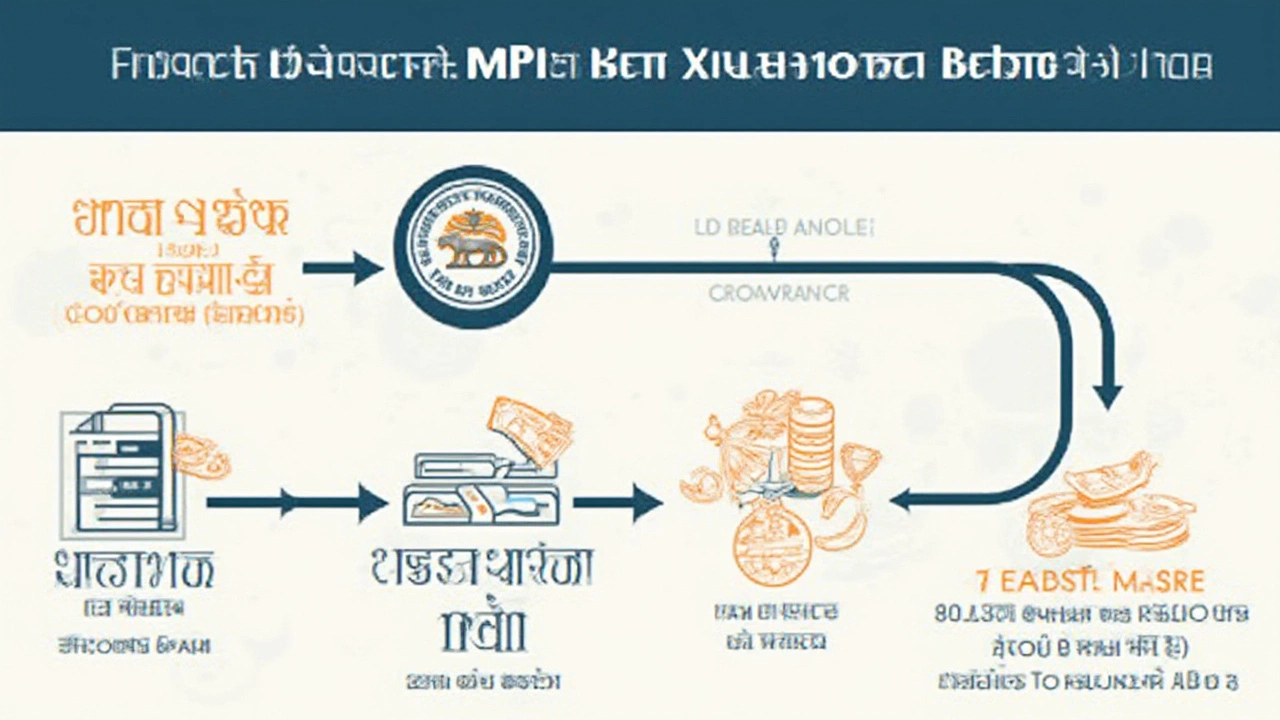Picturing a whopping transfer to your overseas account from India? You’re not alone. With global business, investments, and families scattered around the world, NRIs often feel stuck between complicated rules and practical needs. The real question is: how much money can you transfer out of India without hitting a legal roadblock or raising regulator eyebrows?
The Reserve Bank of India (RBI) doesn’t exactly make this info easy to find or understand. And too many people trip up on paperwork or panic at tax season because they missed the fine print. But here’s the deal—the rules aren’t impossible, they’re just detailed. Let’s break it down in a way that’s totally clear, with some insider tips you won’t find on a boring bank brochure.
Understanding RBI’s Outward Remittance Rules for NRIs
The big law at play here is the Foreign Exchange Management Act (FEMA), tied in with something called the Liberalised Remittance Scheme (LRS). Sounds complex, but it’s actually a simple set of rules that tell you how much money you can move in and out of India. For NRIs (Non-Resident Indians), the main point is the annual outward remittance limit—basically a cap on how much you can legally transfer every financial year.
As of the latest RBI notification, the annual outward remittance limit under LRS for resident individuals is USD 250,000 per financial year (April to March). Now you might wonder: does this limit also apply to NRIs? Here’s the twist—NRIs, by strict definition under FEMA, aren’t supposed to use LRS for remitting funds abroad, because LRS is technically for resident Indians. So how do NRIs send their funds out?
NRIs can remit money abroad from their Non-Resident Ordinary (NRO) accounts under different RBI rules. The magic number: NRIs can transfer up to USD 1 million (or its equivalent) per financial year from their NRO account, provided the funds are repatriable (eligible to be sent abroad) and legitimate (like sale proceeds from property, assets inherited in India, or legitimate savings).
This is far more generous than the resident limit under LRS. But there’s a catch—you must provide proper documentation to prove the source of funds and compliance with Indian tax rules. If you inherited an apartment in Delhi and just sold it, you could move up to USD 1 million abroad in that financial year from the sale proceeds, after paying capital gains tax, and submitting the proof.
Let’s put these pieces together so you don’t get stumped by jargon:
- LRS: For resident Indians, max USD 250,000/year to send abroad.
- NRO Account for NRIs: Max USD 1 million/year to remit funds, as long as taxes are paid and paperwork checks out.
Regulators want to ensure money moving out isn’t the result of money laundering or tax evasion. That’s why they insist on documentation—and banks won’t process large outward remittances without it.
| Account Type | Who Can Use | Remittance Limit per Year | Purpose |
|---|---|---|---|
| Resident Savings (LRS) | Indian residents | USD 250,000 | Investments, expenses, gifts, etc. |
| NRO | NRIs/PIOs | USD 1 million | Sale proceeds, assets, income in India |
| NRE | NRIs/PIOs | No limit (if sourced from outside India) | Freely repatriable funds |
That’s the big picture. But how do you actually go about transferring funds, and what are the most common mistakes or pitfalls? Hang tight, we’ll get into it.
The Process of Transferring Money Abroad as an NRI
Laws are one thing—real life is another. You want to move your money, not spend ages arguing with your bank or tax advisor. The first step: pick the right account. You’re using your NRO account because you’ve earned income in India, sold assets, or inherited property. Funds in your NRE account (fed from abroad, not India) are already fully repatriable without a cap.
Here’s the full step-by-step process, so you don’t miss anything:
- Get Tax Clearance — Before the bank wires money overseas, they’ll want proof all Indian taxes due on these funds have been paid. This means getting a certificate from the Indian Income Tax Department (Form 15CA/CB). Accountants can help speed this up, and it’s smart to start here.
- Gather Supporting Documents — What counts as proof? Typically, this means sale deeds for property, proof of inheritance, bank statements for source of funds, and your tax clearances. Banks occasionally want more, but these basics usually work.
- Fill Out the Bank’s Remittance Form — Every bank has its own inward/outward remittance documentation. It’s usually a simple form, but they cross-check details obsessively, especially for amounts over INR 10 lakh.
- Legal Source Declaration — This is mostly a box-ticking exercise where you say the money isn’t the proceeds of crime, and that you are the account holder remitting funds from your NRO account.
- Bank Processes the Transfer — Once everything checks out, the bank will convert rupees to foreign currency at the prevailing rate (look for days with favorable INR-USD rates!).
- Completion and Tracking — You should get a SWIFT copy or tracking reference. Money typically arrives in your overseas account within 1-5 business days.
The process is less scary than it looks once you have the paperwork in place. NRIs have been doing this for years, and by 2024, most major Indian banks (SBI, HDFC, ICICI, Axis) offer online remittance portals for added convenience. Don’t expect instant transfers though—banks still love their paperwork.

Hidden Stuff: Fees, Taxes, and Smart Ways to Maximize Your Transfer
Let’s get real—nobody likes losing money to hidden charges or poor exchange rates. If you’re transferring a big chunk of savings, every rupee matters. Here are the things most people overlook (and later regret):
- Remittance Fees: Indian banks charge fees per transaction, ranging from INR 500 to INR 2500 or more, plus GST. Overseas receiving banks may also levy charges. Always ask both sides before sending.
- Exchange Rates: Banks don’t use the mid-market rate you see on Google. They build in a ‘spread’—the small margin they profit from. Even a 1% difference can mean thousands on a big transfer. Power tip: remittance services like Wise, Remitly, or InstaReM sometimes offer better rates than banks, but always compare the total cost after all fees.
- Tax Deducted at Source (TDS): Yes, there’s a net that catches high-value remittances. As per July 2023 rules, a TDS of 5% is deducted for remittances above INR 7 lakh in a year unless you provide proof of tax payment or tax residency status. This can tie up cash for months unless you plan ahead.
- Limits by Purpose: The USD 1 million cap applies only for certain repatriation purposes (like property sale or inheritance). Family maintenance, education, medical emergency? Your case might be processed more quickly, but you must specify the purpose correctly.
Seasoned NRIs time their transfers for months with favorable rupee rates, like after the Union Budget or financial year-end, when the currency tends to be volatile. Some split large transfers into several small ones to stay below TDS caps or to minimize paperwork per remittance.
What NOT To Do: Common Pitfalls and Myths
Thinking of using a friend’s account or sidestepping the paperwork to save time? That’s exactly how people end up frozen out of their funds or flagged by compliance teams. Here are classic blunders you definitely want to avoid:
- Not Disclosing the Source: If the paperwork looks fishy or clouded (like a mismatched sale deed or skipped tax forms), banks freeze transfers fast. Always be upfront.
- Using NRE Account for Local Earnings: Only foreign-source funds should go into your NRE. Mixing up where your money came from can lead to endless questions from both bankers and the tax office.
- Splitting Transactions Creatively: Attempting to ‘dodge’ reporting by breaking up large transfers—a big no-no. Banks connect the dots, and this triggers red flags under anti-money laundering rules.
- Assuming the Same Rules Apply Everywhere: Remittance rules change if the destination country is on a watchlist, or the funds are headed to tax-haven jurisdictions. Some banks even restrict transfers to certain countries (think Cyprus, North Korea). Always check the fine print.
Another myth—"If I am transferring under $1 million, I don’t need to show any documents." Wrong. Even small remittances can be verified. It’s less hassle, but not zero.

Future Changes and Pro Tips for Hassle-free Remittance
The Indian government tweaks remittance rules a couple of times every decade, usually to track funds better or adjust to global compliance norms. For instance, in 2023, the Finance Ministry hiked the TCS rate for certain overseas remittances. So it pays to keep an eye on RBI circulars or follow good financial news portals.
Banks have gotten much faster—and stricter—about compliance in the past few years. Digital KYC (Know Your Customer), online uploads for Form 15CA/CB, and even app-based tracking are changing the experience. In fact, the biggest hassle is now mostly documentation, as Indian auditors scrutinize foreign remittances much more after the Panama Papers leak and other financial scandals.
Some smart moves I’ve seen experienced NRIs make:
- Get your documentation in order months before major asset sales. Don’t wait for buyers to finalize the deal before lining up your paperwork.
- Hire a local CA who 'gets' NRI remittance rules. Not all accountants are equally sharp with NRI-related paperwork.
- Use digital remittance platforms only if you’re confident your documentation will pass Indian bank scrutiny. Some fintechs are less accepted by large Indian banks.
- Keep digital and physical copies of every transfer. If the IT department asks questions in the future, you’ll have everything you need.
- Make the most of the USD 1 million limit—it resets each financial year (April 1 to March 31), not as per the calendar year like in the US or UK. Time your transfers accordingly.
To wrap up, the limit for NRI money transfer out of India is USD 1 million per financial year from your NRO account, provided you’ve done things properly. Don’t get spooked by paperwork—think of it as a one-time headache for long-term convenience. Steer clear of shortcuts, trust only regulated banks or trusted remittance partners, and don’t be shy about asking your bank’s NRI desk for help. Money matters need patience, but no need for stress—as long as you play by the book (and watch out for those notorious Indian TDS deductions).

